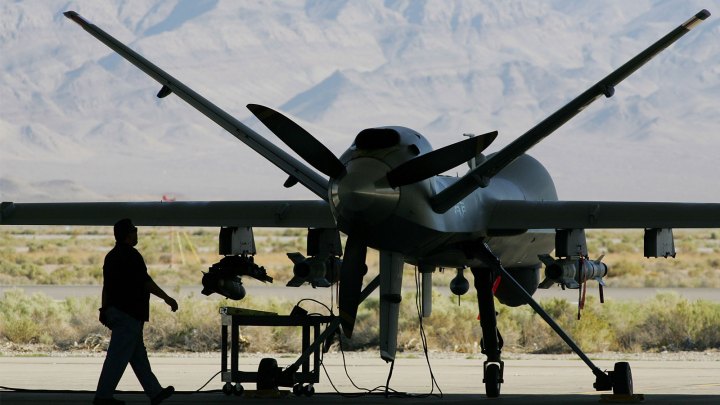
When you hear the term “killer robots,” there’s a good chance you think about The Terminator or I, Robot, or some other dramatic interpretation of the concept. But despite the fact that Hollywood loves to cast killer robots as a far-fetched technology that only exists in a dystopian future, autonomous weapons already exist in the real world — and they’re rapidly becoming more common in battlefields across the globe. Experts say the proliferation of such weaponry has accelerated dramatically in the past few years, and the world’s military powers are now engaged in an autonomous arms race that’s increasingly difficult to stop.
Michael Klare, a professor emeritus of Peace and World Security Studies at Hampshire College, tells Digital Trends that he’s been following the Pentagon’s moves toward using killer robots on the battlefield for years. He notes that Defense Secretary Mark Esper has recently been talking about equipping the Navy with unmanned ships and submarines that are capable of carrying weapons. He says the Air Force is moving forward with autonomous combat drones, and the Army is working toward using autonomous tanks.
“I would say within five years, battle-ready models will be coming off assembly lines.”
“They’re testing prototypes now in war-games, but they’re not yet being mass-produced. I would say within five years, battle-ready models will be coming off assembly lines,” Klare says. “They’re ordering prototypes of all these things, and all of the companies are competing to build the prototypes, because they know that there will be huge orders in the future.”
Once the Pentagon has decided which prototypes best fit its needs, it may start placing large orders for these autonomous weapons, and there’s a lot of money in it for the companies that have their prototypes chosen. That’s why we’re kind of seeing something of an arms race among military contractors at this moment as they all try to develop prototypes that can beat out the competition.

The slippery slope of autonomous weapons
Klare says he worries about how these kinds of technology could get out of control and cause major problems once they start being used in the real world. He says he can imagine a robot malfunctioning, its signal being jammed during a battle, or it being hacked. If one of those things happened, such a robot could wreak havoc and kill a lot of people.
“We’re talking about a warship that is capable of firing off missiles at Russia or China’s mainland. You want to make sure that that warship doesn’t decide that it’s time to start World War III on its own,” Klare says. “What kind of controls are they going to have? Will they be 100-percent reliable?”
“We’re seeing a proliferation of autonomous weapons spending … Everyone is arming up, and everyone wants the latest tech.”
Imagine a situation where robotic tanks, autonomous combat drones, and robotic warships are all engaged in a conflict and something goes wrong with the systems that are supposed to be controlling them. If the military loses its connection with these killer robots, things could get out of control quickly, and it might be very difficult to get things back under control.
Mary Wareham, global coordinator at the Campaign to Stop Killer Robots, tells Digital Trends that we all know how technology fails us in our daily lives, and the threat of killer robots failing and possibly killing many people is a very serious one.
“We’re seeing a proliferation of autonomous weapons spending that is going on right now. Everyone is arming up, and everyone wants the latest tech,” Wareham says. “There’s still considerable confusion about what’s acceptable and what’s unacceptable, and what will be unacceptable is the stuff that will cause mass casualties.”

Treaty effort
The Campaign to Stop Killer Robots is trying to get countries to sign a treaty to ban the use of autonomous weapons in war. She says that it has been slowly making progress, but the major powers are still resisting such a treaty. The campaign had a meeting at the United Nations with representatives from many countries last month.
“When we look at what the major powers are doing, the ones that participated in that meeting were still opposed to regulation and were calling it premature, but they were talking,” Wareham says. “The elephant not in the room was Russia. They could cause procedural issues.”
Wareham says Russia has long been reluctant to even engage with the idea of signing such a treaty. Time is running out for this kind of treaty to be agreed upon, because in America and many other countries around the world, killer robots are being rapidly developed and could be in regular use in the not-too-distant future.
Once that happens, countries may not be willing to sign such a treaty until something horrific has already happened.



